‘Evan’s Drum’: A film about the heartbeat of Labrador
The reemergence of an old Inuit tradition is now being passed on to a new generation
Evan’s Drum is a documentary set in Happy Valley-Goose Bay, a small community in Labrador. The film follows Amy, a mother who shows her son Evan the ways of Inuit drum dancing and the intimate love and joy of this practice.
Vividly shot with the scenic landscapes of Atlantic Canada, the film features the revival of the drum dancing practice that for generations disappeared because of settler colonialism. While a dark history looms over the past, the slowly reemerging culture that has returned to the tightly knit Inuit community in Labrador shows their strength and resilience.
Ossie Michelin, director of Evan’s Drum, lives in Montreal, but is originally from Northwest River in central Labrador. A freelance journalist and filmmaker, he graduated from the Concordia journalism program in 2008. He began to work for the Aboriginal Peoples Television Network as a video journalist for five years and then for the last seven years has been freelancing: working in film, journalism, and as an editor for the Labrador Life Magazine. “I do a little bit of everything,” said Michelin. Michelin, of Inuit heritage, has a passion for Indigenous storytelling and narrative sovereignty.
Growing up, Michelin had never heard of drum dancing. At the time, the practice wasn't a part of Labrador culture but it eventually came back in the early 2000s. He started seeing it around in his surroundings, and by the time he was making the film, it became part of everyday Labrador life.
“Whenever there's anything going on in town, you often have the drum dancers show up,” he said. There would be drum dancers at local concerts in parks. Drum dancers would come and perform if there was going to be an apology from the Prime Minister or if there was going to be an opening of a new community centre, he explained.
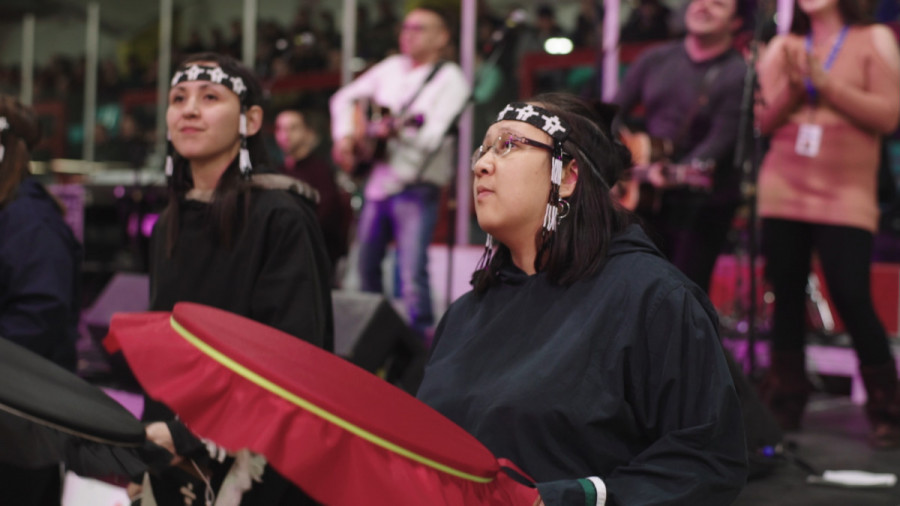
Drum dancers became part of Labrador’s new normal Michelin explained. At the time he was working with the news channel in Labrador and producing a commemoration project on the healing of Indigenous residential school survivors. His job as a videographer was to record what these members of the community had to say.
After Michelin travelled around Labrador for the project, he returned to his home community of Northwest River. There he met Amy at a local gathering ceremony where she was drum dancing as part of a local group in the community. Amy is the mother of Evan and one of the protagonists of the film. Around this time, the National Film Board was doing call-outs for the Labrador Doc Project, which aimed to fund and help Inuit storytellers produce short films that celebrated their cultural heritage.
Michelin asked Amy if she would be interested in working on a short film focused on her and her drum dancing, to which she accepted. At the time Amy was eight and a half months pregnant when the first scene was filmed and although Michelin insisted that they could do the documentary at a later time she persisted with continuing the project.
“I'm just so thankful for her and Evan. We had some long days but they really were troopers. [...] It was just a really great process working with them, working with the National Film Board, taking the time to tell this story and I'm really pleased with how it turned out,” he said.
Michelin started working on the film back in summer 2018. It was part of the Labrador Doc Project. Four Labrador new filmmakers made different short documentaries with the National Film Board. Film production began in spring 2019 and finished at the end of the year. However, it got pushed into early 2020 right before the pandemic began.
“We ended up filming the second half in August and September of 2020. We ended up following Evan and Amy in the film for about a year and a half and you really get to see him kind of grow up a little bit in the film and see him learn to drum a bit more and become more confident with it,” said Michelin.
In parts of the film, Evan is seen wearing a medical mask. Staff wanted to cut this portion of the movie to give it a stronger sense of cohesion but Michelin decided to keep it in. “Basically, the first half was pre-pandemic and the second half of the film was during the pandemic and we discussed whether we should try to hide it and I was like, ‘No. This is a pandemic. This is our reality. Everyone will understand. This is the reality of Labrador,’” he said.
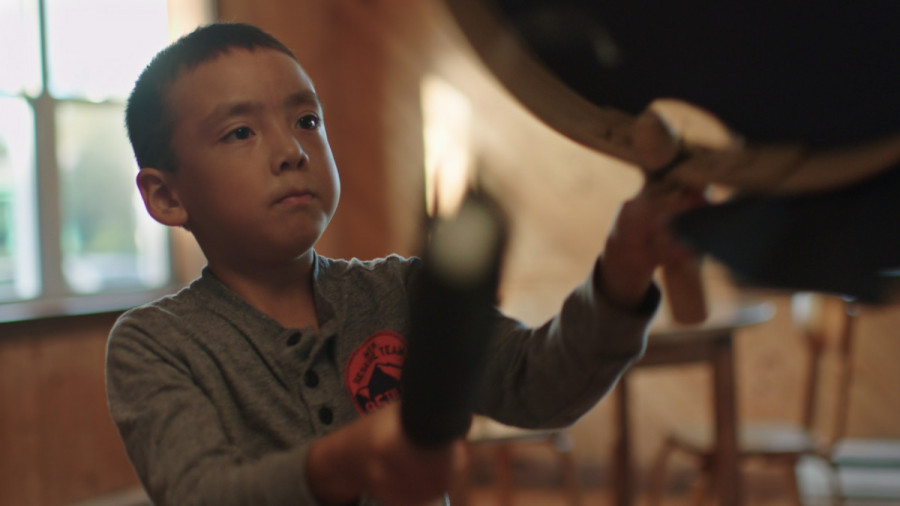
Rohan Fernando, a producer of the Atlantic Studio division at the NFB of Canada who worked on the movie, explained the challenges of finishing a film during the pandemic. “It was challenging for sure and particularly in finishing the shoot in Goose Bay,” he said. “I believe that was one of the first trips that I took on a plane after the lockdown happened in March. We had a little window [of time] in there to film and so we got the film completed.”
The editing process was done in Montreal and the sound design and final mix were all done remotely. “It's really difficult to mix the film without actually being in the mixing theatre,” he said. Filming was finished in September 2020 and the editing completed in March 2021.
Fernando really enjoyed the mixing and sound design of the film. “The sound designer and composer Judith Gruber did a fantastic job incorporating the sound of drums into parts of the score.” The closing song at the end of the film, “the sons of Labrador” incorporates Inuk drumming and it's one of the emotional peaks of the film as the English singing turns into Inuktitut.
Michelin had a specific vision for the story. Coming from a background in journalism, he wanted to take a different narrative approach for his documentary.
“A lot of the times the stories that I tell are pretty intense or controversial, or there's a lot of big important issues that are happening that are life or death in some ways,” he said. “I just wanted to tell this really nice story about my home. My main goal was that Amy and Evan had a great experience and that they finished with a really nice souvenir and I'm really happy I was able to do that.”
“I just wanted to tell this really nice story about my home.” — Ossie Michelin
Michelin took the extra time and care offered with a documentary production schedule to tell an uplifting story that youth in Labrador will get to watch as they grow up. “Hopefully, it will inspire them to do their own stories or inspire them to pick up a drum.”
Outside of Labrador, the film has also been making its mark in Quebec. Seb Beaudet, a CEGEP student that studies in St-Jerome loved the film. “I just thought it was really nice. I liked that the mother’s son showed interest in the drumming. I thought the scenery at the end was beautiful as well as all the shots of them getting to play together, having fun and sharing their own culture.”
Michelin tries to emphasize Indigenous perspectives in his overall work and celebrate the triumphs of these communities that are often ignored in Canadian reporting. Narrative sovereignty is also an aspect that reflects Michelin’s reporting.
“It's the ability to define yourself and the ability to share your perspectives and have your perspective considered. For Indigenous people, for a long time, it was other people coming in and telling our stories and gatekeeping our stories,” he said. “We always knew that we had amazing stories, but those stories were kept away from the rest of the country and now we have decades and generations to catch up on telling our stories.”
Narrative sovereignty is also letting Indigenous people see themselves reflected in the media and feel a part of a bigger conversation that's happening around these issues in Canada. “I do this stuff to help settlers better understand Indigenous people so that Indigenous people have less work to do.”

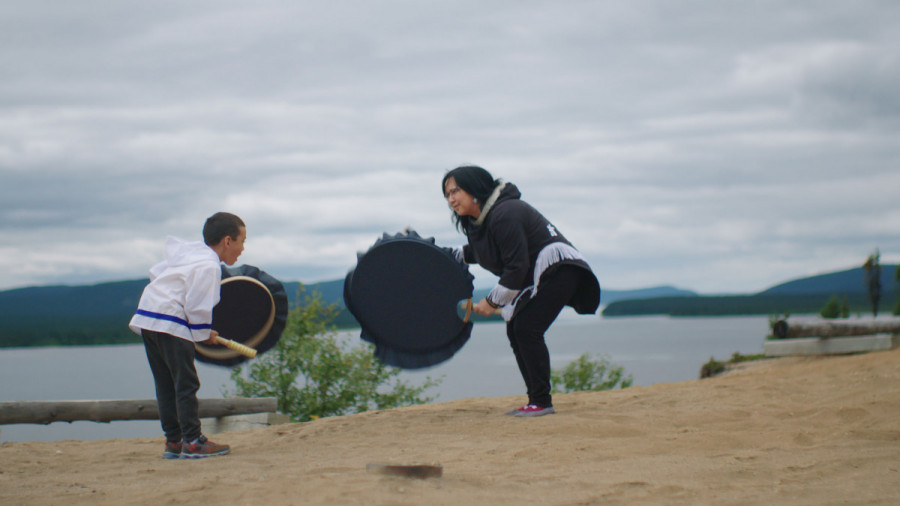
_600_832_s.png)


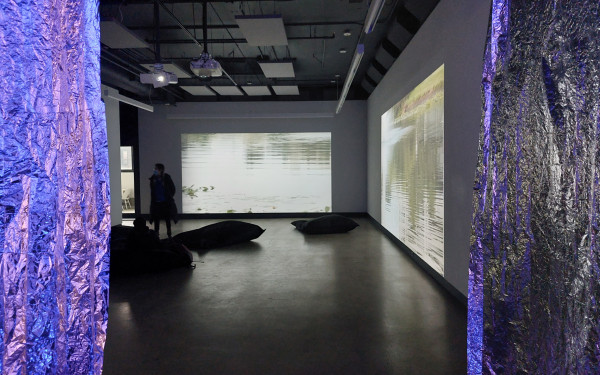
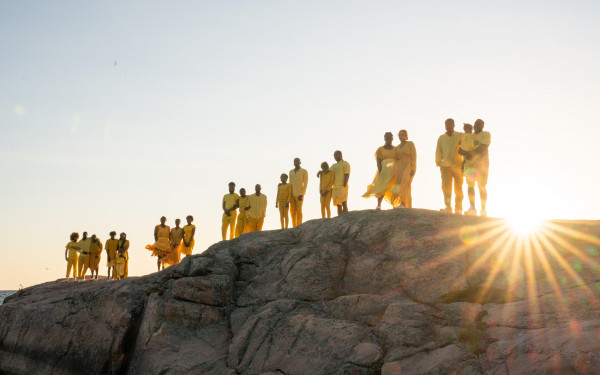
_600_375_90_s_c1.jpg)